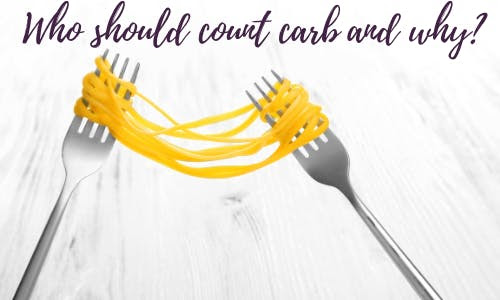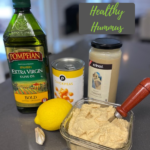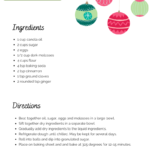Most people with diabetes have heard of “carb counting” and I’m sure some of you actually do count carbohydrates. However, I find there is a lot of confusion about it.
After all, it’s not something that you automatically know how to do if you get diagnosed with diabetes. Sure, if there’s a label you can look at that. But there’s a little more to it, and there is not a label on everything you eat.
Were you given any advice about carb from your health care provider?

Sometimes people are told to have a specific number of carbs per meal, let’s say 45 grams. (There is no “right” number for everyone). If you’ve been to a diabetes class or seen a dietitian you probably have a good idea what that means. But if you aren’t referred and you’re told have 45 g of carbs per meal that would be like a foreign language.
People are left to guess what it means.
So first, here’s what carb counting is not.
Looking to see how much carb something has and choosing the food with the lowest amount.
Having an arbitrary number of carbs that you will not “go over” when looking at food labels. “I don’t eat anything with more than 20g of carb.”
Counting the number of carbs on starchy or sweet foods only (the foods you have heard have carb).
Counting the number and not doing anything else. (Well, I guess that is carb counting, but still not useful).
Saying you have 45 g of carbs but not actually counting at all but you remember being told to have 45 g per meal.
Next let’s talk about who should count carbohydrate and why.
People with Type 1 (T1) Diabetes
Remember people with Type 1 make very little or no insulin. They have to inject insulin to get the glucose out of the blood and into the body’s cells. You can’t live without insulin.
Foods containing carbohydrate have the biggest effect on blood sugar. Carbohydrate is digested and breaks down to glucose.
Knowing how much carb you are eating, carbohydrate counting, is a very helpful tool for determining how much insulin to take before your meal.
Let’s look at an example. If you have an apple for a snack that is 20g of carbohydrate you need less insulin than if you had a dinner of meatloaf, 3/4 cup mash potatoes and 1 cup of peas and carrots which is 42g carb. You need twice as much insulin for the dinner meal in this case.
By the way, there’s nothing wrong with needing “more insulin”.
Insulin is a hormone that that needs to be replaced since the body no longer makes it. Thank God we have this life saving drug. It was first discovered 100 years ago in 1921.
With today’s technology, it is easier than ever before to dose insulin for what you are about to eat by entering the carb amount into a device.
People with Type 2 (T2) Diabetes
People with T2 diabetes may or may not take insulin. In most cases, people with T2 who take insulin take “set doses” meaning the same dose each meal.
Carb counting is helpful here, as well. The goal here with is to consume consistent carbohydrate. This practice can help stabilize your glucose because you consistently (not constantly :)) fuel your body with routine meals and possibly snacks.
For instance, if you ate roughly the same amount of carbohydrate every day for breakfast, that carbohydrate would break down to roughly the same amount of glucose. In this way you can help manage your glucose from being too high or low. Your “after breakfast glucose readings” likely will be similar each day.
Note: I am oversimplifying here. There are a zillion things that affect blood sugar. Food is just one, but it is one we can control. Aiming for consistent carb definitely helps, even though other things also affect glucose levels.
True story example: I had a client that ate the exact same breakfast for 2 days in a row. On the second day her glucose was over 100 points higher than the first day. She was shocked. How can this be?!
You have to be a sleuth sometimes with diabetes. In questioning her for more details, I found out the second day she couldn’t find her car keys and she was going to be late for work. Aha! It was probably added stress that caused her high blood sugar the second day.
The reason carbohydrate is a focus with diabetes is because carb turns to glucose and diabetes is a problem where you don’t make any or enough insulin to move the glucose into the cells.
Carbohydrate is part of a healthy diet. It’s good to include grains, fruits, vegetables, and low-fat or fat fat-free milk and yogurt.
With T1 you can count carb to help you determine how much insulin to take.
With T2 you can count carb and aim for a consistent amount–enough to fuel and nourish your body but not too much at one time to cause a high glucose.






Leave a Reply